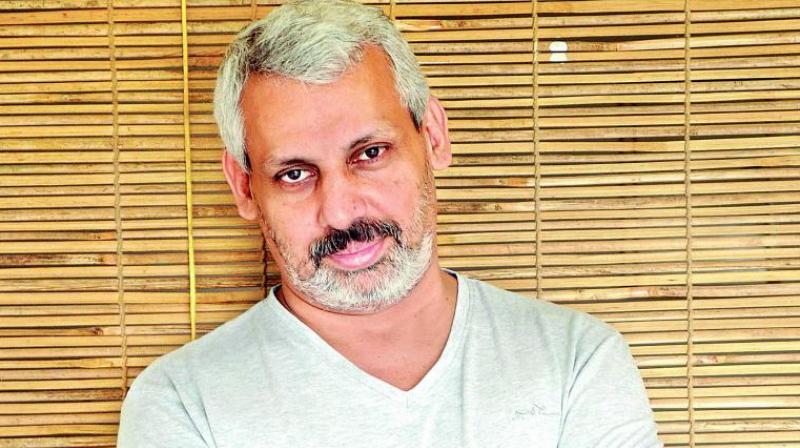I like to keep my world small and quiet, says Anees Salim
Author Anees Salim uses his son's voice in a semi-autobiographical novel that narrates the story of a boy who wishes to be a writer.

Assumptions begin to run wild from page one of The Small Town Sea. Who is the boy, the narrator, the voice behind the tale? The author, Anees Salim, or his son? The answer is tucked away right at the end of the book, where Anees quietly puts in a line at the bottom — ‘And Omar, my son, whose voice I secretly borrowed to tell this story’, he acknowledges.
“In some ways, the book is semi-autobiographical. I used my son’s voice to narrate this story because the book was actually born inside a dream I had, in which he was stranded in my hometown because of my death. When I started writing this book, about two-and-a-half years ago, he was thirteen-and-a-half, and I decided to give the narrator the same age and attitude,” Anees reveals in an email interview. He didn’t seem keen to do an interview in person, the same way he doesn’t attend literary festivals, book launches, and tours. Here he reaffirms his line, spoken many times before, in many interviews: “I like to keep my world small and quiet. That’s it.”
The Small Town Sea is Anees’s fifth book and the whole novel is a letter to James Unwin, apparently a publisher, from a boy who wishes to be a writer like his dad, narrating his story of moving away from a city to a small town sea, the whim of his ailing dad to die in his hometown by the sound of the waves. The small town turns out to be unexpectedly full of events, and the boy goes through it all as a boy would: sad one moment, happy again, moving on, observing, learning, growing.
 The small town sea by Anees Salim Rs 599, pp 283 Hamish Hamilton
The small town sea by Anees Salim Rs 599, pp 283 Hamish Hamilton
Anees has narrated his novels through men and women (not forgettable, the notorious Hasina Mansoor from Tales from a Vending Machine) but this is the first time he has gone so young. “It took me a few weeks to get the voice right, and then the voice became loud and clear inside my head,” he explains.
He didn’t give a name to the boy or to the many members of his family. The boy’s dad — with large bits of Anees in him — is Vappa, what Muslim boys usually address their dad as, and Umma, the mother. The little sister is called Little. Even the places have no names. But you can guess that it is Varkala, his hometown that he’s been talking about all through, and Kochi, the port city mentioned in the book. “The moment I name a place, I feel that I lose the freedom to change its topography. For me, writing involves a bit of town planning, and I love to add streets and buildings to the setting the way that pleases me. That’s why I created a fictitious land called Mangobagh where my first two books were set. In The Small-Town Sea, I didn’t want to call Varkala or Kochi by any other name, so I decided to leave them nameless.”
Names are not important in this story, he says, but then certain spots are. The path of the cliff the boys — boy narrator gets a friend in the small town, Bilal — walk through, the helipad where the boy’s parents had once come together without knowing each other, the grandmother’s house the boy reluctantly moves to, all come from Anees’s life, his childhood, when he took a long winding road to the school that he had dropped out of at 16.
“While writing this book, I frequented the cliff and the beach because I had to see them through the eyes of a child new to the town,” he says. Although he doesn’t say if the friends that Vappa meets again after many years are also from his life, a certain young girl that broke Vappa’s young heart stands real. And so are the rejection letters to his novels, and the hotel room where he wrote his books. And if that hotel room had not been broken down into a new apartment, he would perhaps have gone there to write his new book set in a new place. But like a line Vappa might have said in The Small Town Sea, Anees writes: Then again, I might discard it after a few chapters.


